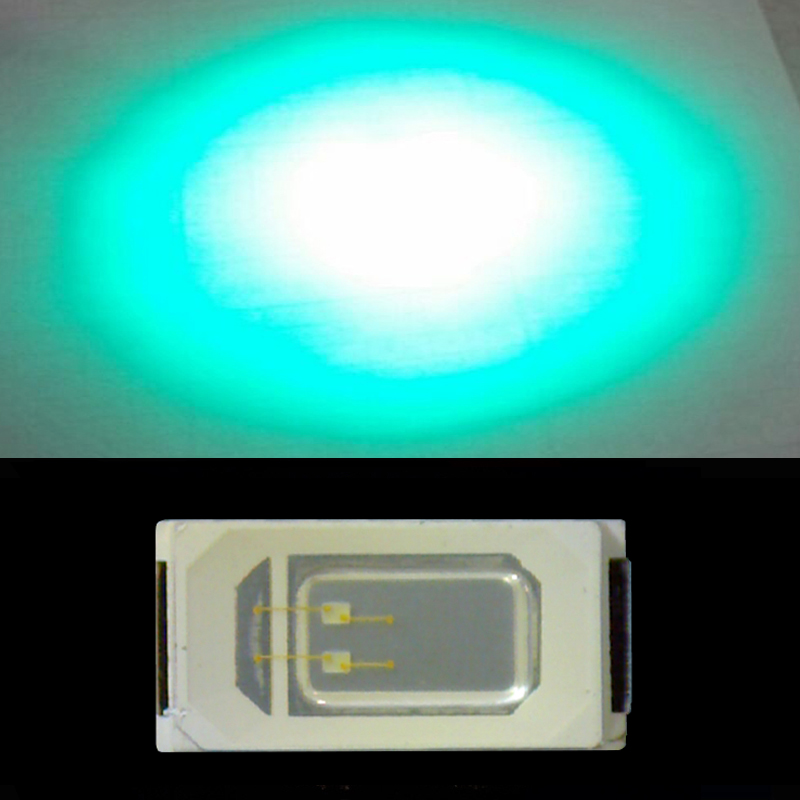As a new green lighting technology, power white LED has the advantages of high light conversion efficiency, low energy consumption, long life and no maintenance, and is gradually applied to various lighting fields. The long life of LED is based on its safe working environment. For LED lighting, there are two main threats that affect its life: one is over-current shock, that is, the current applied to the LED exceeds the maximum rated current in the LED technical data sheet. , including over-current shock caused by over-voltage; the other is overheating damage. These damages can be manifested as immediate failure of the device, or it can occur after a long time after an overcurrent shock event, shortening the working life of the LED.
LED lamp damage
LED lamp failure is caused by failure of power supply and drive, and secondly by failure of LED device itself. Often the damage to the LED power supply and drive comes from the over-current surge (EOS) of the input supply and the open-circuit fault at the load. The over-current shock of the input power source often causes damage to the driver chip in the driver circuit and breakdown damage of passive components such as capacitors. A short-circuit fault at the load end may cause over-current drive of the drive circuit, and the drive circuit may be damaged by short-circuit or short-circuit fault. There are several main reasons for the failure of the LED device itself.
1. Transient overcurrent events
Figure 1: LED welding wire burned and damaged
A transient overcurrent event is when the current flowing through the LED exceeds the maximum rated current in the LED technical data sheet. This may be due to a large current directly generated or indirectly generated by a high voltage, such as a transient lightning strike or a switching power supply. Overcurrent caused by overvoltage events such as state switching noise and grid fluctuations. These events are transient and have a very short duration. Usually we call them spikes such as “current spikes†and “voltage spikesâ€. The transient overcurrent event also includes the LED being powered on or the transient overcurrent when plugged in.
For LED lighting in cars, the transient load dump surge of ISO7637-2 is an important threat to its normal operation.
The failure mode of an LED after an electrical shock is not fixed, but it usually causes damage to the weld line, as shown in Figure 1. This damage is usually caused by a very large transient overcurrent. In addition to causing the weld line to blow, it may also cause damage to other parts of the weld line, such as sealing material.
2. Electrostatic discharge event
Electrostatic discharge (ESD) damage is the most common transient overvoltage hazard in the manufacture, transportation and application of highly integrated semiconductor devices, while LED lighting systems must meet the "electrostatic discharge mode" of IEC61000-4-2. 8kV contact discharge to prevent over-current shock failure of the system during electrostatic discharge.
Figure 2: Damage to the PN junction of the LED part
The performance of the LED PN junction array will be reduced or damaged, as shown in Figure 2. The internal failure of the LED chip caused by the ESD event discharge path may be only a partial function damage, and if it is serious, it may cause permanent damage to the LED.
Thermal management and fault overheat protection are a challenge for LED lighting designs where nearly 80% of energy is converted to heat. Both theory and practice have demonstrated that the performance and lifetime of LEDs are closely related to the operating temperature of the PN junction of the LED. When the junction temperature in the LED chip rises by 10 ° C, the luminous flux is attenuated by 1%, and the lifetime of the LED is reduced by 50%.
5730 Green SMD LED
There have two kinds of the voltage on this 5730 Green Smd LED: 1.8-2.5V and the 2.8-3.5V. The voltage of yellow-Green SMD LED( 560nm LED -575nm LED) is 1.8-2.5V, they are not the normal product, but they do can't be ignored. Most of the Green SMD LED 's voltage are 2.8-3.5V, like 5730 lime SMD LED, 5730 green SMD LED.We supply kinds of 5730 SMD LED with different wavelength from 365nm to 1550nm, which include the visible LED and the invisible LED.
In this catalog, we mainly introduce the 5730 Green SMD LED.

In this catalog, we mainly introduce the 5730 Green SMD LED of visible light. 5730 SMD LED, size is 5.7*3.0mm. For this Green SMD LED, we can package with single chip 5730 SMD LED or 2 chips 5730 SMD LED and the power can be 0.06W 5730 Green SMD LED, 0.1W 5730 Green SMD LED, 0.2W 5730 Green SMD LED, 0.5W 5730 Green SMD LED, 0.6W 5730 Green SMD LED, 0.8W 5730 Green SMD LED, 1W 5730 Green SMD LED, 2W 5730 green SMD LED, 3W 5730 Green SMD LED and so on.
5730 Green SMD LED is deeply loved by their users because of the small size, the high bightnes and 5730 Green SMD LED have the cooling copper at the bottom, which can make the product to get out of the heat in time.
It is often used in LED lighting, LED Lamps , LED backlight, LED panel lights, LED furniture, landscape LED, LED Lighting, LED Lighting, led Backlight, LED Panel Light, LED Furniture, LED Photo Light, LED Aperture, LED Toys, grow light LED, fill light LED, LED aperture and other lighting products.
5730 Green SMD LED
5730 Green SMD LED, Ultra Brightness SMD 5730 Green LED, 5730 Green SMD LED 1W
Shenzhen Best LED Opto-electronic Co.,Ltd , http://www.bestsmd.com